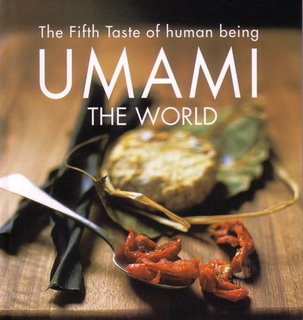<
MSG
We have repeatedly heard this word through various TV cooking programs, showcasing the “miracle” powder that will instantly make any food taste better just by adding it. It has also been very controversial because of rumours that it’s a carcinogen and a very dangerous additive, prompting major food products to take pride in being labelled “MSG free”. But what is MSG anyway and why is it ever connected to the word “umami”?

Miracle seasoning or nutritional abomination? Hmmm…
The History of MSG and Umami
Umami is a flavor variously described as savory and satisfying and rich. Foodies and scientists alike are calling it the “fifth taste,” an official category of flavor recognized by specialized taste receptors in the human mouth. While umami is a relatively new concept in this country, it has been well known in Japan for nearly 100 years. It was identified in the early 20th century by Kikunae Ikeda, a Japanese scientist who coined the name umami (pronounced “oo-MA-mee”) using the Japanese term for “deliciousness.” He found that foods with the umami taste have a high level of glutamate, an amino acid and a building block of protein. He synthesized monosodium glutamate and patented the process, which was later used by famous company Ajinomoto to create the more familiar MSG products of today. According to Ajinomoto, an estimated 95,000 metric tons of MSG are sold in North America each year and is used by major food chains and companies like McDonald’s and Burger King, among others.

Kikunae Ikeda (1908), discoverer of the famous compound monosodium glutamate
Investigating Umami Physiologically
But what really makes us experience umami as pleasant? Why is it that MSG when eaten alone isn’t a palatable experience? A study by Rolls (2009) sheds light to these questions by hypothesizing that a consonant savory odour (vegetable), along with glutamate willresult in a flavor that can be pleasant. He examined fMRI (Functional Magnetic Resonance Imaging) data of participants who are eating chicken broth soup (elicitor of umami taste). The images showed great stimulations in the secondary taste cortex in the orbitofrontal cortex and tertiary taste cortex in the anterior cingulate cortex, whereas processing in the primary (insular) taste cortex reflects physical properties such as intensity. Moreover, he observed pleasantness sensation as seen by much greater activation of the medial orbitofrontal cortex and pregenual cingulate cortex. The sum of the activations in these parts of the brain by the taste and olfactory components together are greater than when presented separately . This goes to show that the pairing of the glutamate with said “consonant savory odor” most likely produces the umami flavour, not each of them separately. The researcher then concluded that glutamate is a flavour enhancer rather than the umami taste itself; you need a combination of both odor and taste to elicit the rich savory goodness that is umami. As a sidenote, cognitive and attentional modulation of the orbitofrontal cortex (responsible for emotion and reward) also contributes to the pleasantness and appetitive value of umami (McCabe & Rolls, 2007).
Indeed, Jollibee is right when he said “Langhap Sarap!”; our gustatory experiences are impacted by both complementation of taste and olfactory sensation. I find this study really fascinating! For one, the technology used in today’s studies are really advanced. I think it opens our doors to the various areas of our brains we have yet to uncover. Going back, I begin to ponder on the complexity of our taste sensation. I realized that tasting food is only part of the experience; what we smell may well affect the pleasantness of our food experience. I personally believe that there are more than 5 basic taste in the world (umami being the fifth), and with such revolution in methods and instruments to study sensation, the next generation will probably taste food in a whole new different way!
References
McCabe, C., & Rolls, E. (2007). Umami: a delicious flavor formed by convergence of taste and olfactory pathways in the human brain. The European journal of neuroscience, 25(6), 1855-1866.
McCabe, C. (2009). Functional neuroimaging of umami taste: what makes umami pleasant? American Journal of Clinical Nutrition, 90(3), 804-813.
